Urgent-start peritoneal dialysis versus conventional-start peritoneal dialysis for people with chronic kidney disease
- PMID: 33320346
- PMCID: PMC8094169
- DOI: 10.1002/14651858.CD012913.pub2
Urgent-start peritoneal dialysis versus conventional-start peritoneal dialysis for people with chronic kidney disease
Abstract
Background: Urgent-start peritoneal dialysis (PD), defined as initiation of PD within two weeks of catheter insertion, has been emerging as an alternative mode of dialysis initiation for patients with chronic kidney disease (CKD) requiring urgent dialysis without established permanent dialysis access. Recently, several small studies have reported comparable patient outcomes between urgent-start and conventional-start PD.
Objectives: To examine the benefits and harms of urgent-start PD compared with conventional-start PD in adults and children with CKD requiring long-term kidney replacement therapy.
Search methods: We searched the Cochrane Kidney and Transplant Register of Studies up to 25 May 2020 through contact with the Information Specialist using search terms relevant to this review. Studies in the Register are identified through searches of CENTRAL, MEDLINE, EMBASE, conference proceedings, the International Clinical Trials Register (ICTRP) Search Portal, and ClinicalTrials.gov. For non-randomised controlled trials, MEDLINE (OVID) (1946 to 27 June 2019), EMBASE (OVID) (1980 to 27 June 2019), Clinical Trials Register (ICTRP) Search Portal and ClinicalTrials.gov (up to 27 June 2019) were searched.
Selection criteria: All randomised controlled trials (RCTs) and non-RCTs comparing the outcomes of urgent-start PD (within 2 weeks of catheter insertion) and conventional-start PD ( ≥ 2 weeks of catheter insertion) treatment in children and adults CKD patients requiring long-term dialysis were included. Studies without a control group were excluded.
Data collection and analysis: Data were extracted and quality of studies were examined by two independent authors. The authors contacted investigators for additional information. Summary estimates of effect were examined using random-effects model and results were presented as risk ratios (RR) with 95% confidence intervals (CI) as appropriate for the data. The certainty of evidence for individual outcome was assessed using the GRADE approach.
Main results: A total of 16 studies (2953 participants) were included in this review, which included one multicentre RCT (122 participants) and 15 non-RCTs (2831 participants): 13 cohort studies (2671 participants) and 2 case-control studies (160 participants). The review included unadjusted data for analyses due to paucity of studies reporting adjusted data. In low certainty evidence, urgent-start PD may increase dialysate leak (1 RCT, 122 participants: RR 3.90, 95% CI 1.56 to 9.78) compared with conventional-start PD which translated into an absolute number of 210 more leaks per 1000 (95% CI 40 to 635). In very low certainty evidence, it is uncertain whether urgent-start PD increases catheter blockage (4 cohort studies, 1214 participants: RR 1.33, 95% CI 0.40 to 4.43; 2 case-control studies, 160 participants: RR 1.89, 95% CI 0.58 to 6.13), catheter malposition (6 cohort studies, 1353 participants: RR 1.63, 95% CI 0.80 to 3.32; 1 case-control study, 104 participants: RR 3.00, 95% CI 0.64 to 13.96), and PD dialysate flow problems (3 cohort studies, 937 participants: RR 1.44, 95% CI 0.34 to 6.14) compared to conventional-start PD. In very low certainty evidence, it is uncertain whether urgent-start PD increases exit-site infection (2 cohort studies, 337 participants: RR 1.43, 95% CI 0.24 to 8.61; 1 case-control study, 104 participants RR 1.20, 95% CI 0.41 to 3.50), exit-site bleeding (1 RCT, 122 participants: RR 0.70, 95% CI 0.03 to 16.81; 1 cohort study, 27 participants: RR 1.58, 95% CI 0.07 to 35.32), peritonitis (7 cohort studies, 1497 participants: RR 1.00, 95% CI 0.68 to 1.46; 2 case-control studies, participants: RR 1.09, 95% CI 0.12 to 9.51), catheter readjustment (2 cohort studies, 739 participants: RR 1.27, 95% CI 0.40 to 4.02), or reduces technique survival (1 RCT, 122 participants: RR 1.09, 95% CI 1.00 to 1.20; 8 cohort studies, 1668 participants: RR 0.90, 95% CI 0.76 to 1.07; 2 case-control studies, 160 participants: RR 0.92, 95% CI 0.79 to 1.06). In very low certainty evidence, it is uncertain whether urgent-start PD compared with conventional-start PD increased death (any cause) (1 RCT, 122 participants: RR 1.49, 95% CI 0.87 to 2.53; 7 cohort studies, 1509 participants: RR 1.89, 95% CI 1.07 to 3.3; 1 case-control study, 104 participants: RR 0.90, 95% CI 0.27 to 3.02; very low certainty evidence). None of the included studies reported on tunnel tract infection.
Authors' conclusions: In patients with CKD who require dialysis urgently without ready-to-use dialysis access in place, urgent-start PD may increase the risk of dialysate leak and has uncertain effects on catheter blockage, malposition or readjustment, PD dialysate flow problems, infectious complications, exit-site bleeding, technique survival, and patient survival compared with conventional-start PD.
Trial registration: ClinicalTrials.gov NCT02646436 NCT02946528 NCT03474367.
Copyright © 2020 The Cochrane Collaboration. Published by John Wiley & Sons, Ltd.
Conflict of interest statement
None known.
Figures

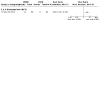
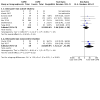
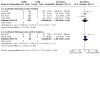
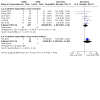
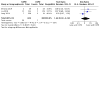
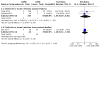

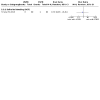

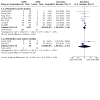
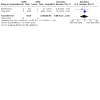
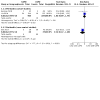
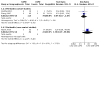
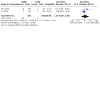
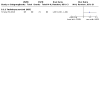
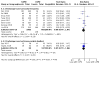
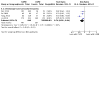
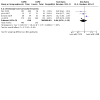
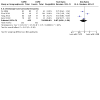
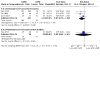
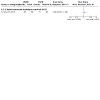
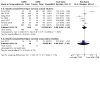
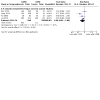
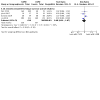
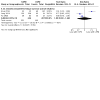
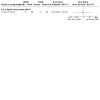
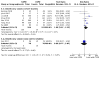
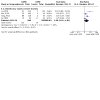
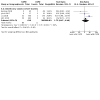
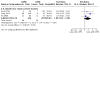
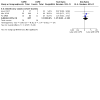
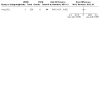

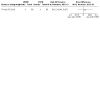
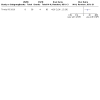
Update of
- doi: 10.1002/14651858.CD012913
References
References to studies included in this review
Ghaffari 2012 {published data only}
-
- Ghaffari A. Urgent-start peritoneal dialysis: a quality improvement report. American Journal of Kidney Diseases 2012;59(3):400-8. [MEDLINE: ] - PubMed
Jaivid 2017 {published data only}
-
- Javaid MM, Lee E, Khan BA, Subramanian S. Description of an urgent-start peritoneal dialysis program in Singapore. Peritoneal Dialysis International 201;37(5):500-2. [MEDLINE: ] - PubMed
Kim 2018 {published data only}
Liu 2014 {published data only}
Nayak 2018 {published data only}
-
- Nayak KS, Subhramanyam SV, Pavankumar N, Antony S, Sarfaraz Khan MA. Emergent start peritoneal dialysis for end-stage renal disease: outcomes and advantages. Blood Purification 2018;45(4):313-9. [MEDLINE: ] - PubMed
Pai 2016 {published data only}
-
- Pai MF, Yang JY, Chen HY, Hsu SP, Chiu YL, Wu HY, et al. Comparing long-term outcomes between early and delayed initiation of peritoneal dialysis following catheter implantation. Renal Failure 2016;38(6):875-81. [MEDLINE: ] - PubMed
Povlsen 2016 {published data only}
-
- Holm MO, Ivarsen P, Bech J, Gabor G, Jensen JE, Otte KE, et al. Unplanned start on PD right after PD catheter implantation is associated with inferior PD catheter survival [abstract]. Peritoneal Dialysis International 2010;30(Suppl 2):S106. [EMBASE: 71928087]
-
- Povlsen JV, Otte KE, Larsen PV, Bech JN, Graehn G and Ivarsen P. Unplanned start on PD with less than two weeks of peritoneal rest between PD catheter implantation and initiation of PD is not associated with inferior PD catheter survival [abstract no: MP499]. Nephrology Dialysis Transplantation 2016;31(Suppl 1):i506. [EMBASE: 72327350]
Salari 2018 {published data only}
-
- Salari A, Ghaffari A. Catheter-related infections in urgent-start peritoneal dialysis compared to conventional start peritoneal dialysis [abstract]. Peritoneal Dialysis International 2018;38(Suppl 1):S8. [EMBASE: 621290484]
-
- Salari A, Ghaffari A. Long-term technique failure urgent-start peritoneal dialysis compared to conventional start peritoneal dialysis [abstract no: 261]. American Journal of Kidney Diseases 2018;71(4):580-1. [EMBASE: 621595904]
See 2017 {published data only}
-
- See EJ, Cho Y, Hawley CM, Jaffrey LR, Johnson DW. Early and late patient outcomes in urgent-start peritoneal dialysis. Peritoneal Dialysis International 2017;37(4):414-9. [MEDLINE: ] - PubMed
Serrano 2019 {published data only}
-
- Serrano A. Urgent-start PD: excellent outcomes at 6 months of dialysis initiation [abstract no: 340]. American Journal of Kidney Diseases 2019;73(5):732. [EMBASE: 2001804437]
Silva 2018 {published data only}
-
- Silva BC, Adelina E, Pereira BJ, Cordeiro L, Rodrigues CE, Duarte RJ, et al. Early start peritoneal dialysis: technique survival in long-term follow-up. Kidney Blood Press Research 2018;43(6):1699-705. [MEDLINE: ] - PubMed
Timely PD 2010 {published data only}
-
- Ranganathan D, John GT, Yeoh E, Williams N, O'Loughlin B, Han T, et al. A randomized controlled trial to determine the appropriate time to initiate peritoneal dialysis after insertion of catheter (Timely PD Study). Peritoneal Dialysis International 2017;37(4):420-8. [MEDLINE: ] - PubMed
Vlasak 2017 {published data only}
-
- Vlasak J. Are we worried about early complications in urgent-start peritoneal dialysis? [abstract no: SA-PO734]. Journal of the American Society of Nephrology 2017;28(Abstract Suppl):868.
Wojtaszek 2018 {published data only}
Yang 2011 {published data only}
-
- Yang YF, Wang HJ, Yeh CC, Lin HH, Huang CC. Early initiation of continuous ambulatory peritoneal dialysis in patients undergoing surgical implantation of Tenckhoff catheters. Peritoneal Dialysis International 2011;31(6):551-7. [MEDLINE: ] - PubMed
Zhang 2017 {published data only}
-
- Zhang C, Zhengrong Z, Yuhan G, Jun D, Jinjin R. Application of automated peritoneal dialysis in patients with end-stage renal disease. Chinese Community Doctors 2017;33:13-4.
References to studies excluded from this review
Abdel 2018 {published data only}
-
- Abdel Aal A, Mahmoud K, Moawad S, Ertel N, Hamed B, Ali D, et al. Urgent-start peritoneal dialysis catheter placement: Outcomes of radiologic versus laparoscopic techniques [abstract]. Journal of Vascular and Interventional Radiology 2018;29(4 Suppl 1):S243. [EMBASE: 621352804]
Abid 2014 {published data only}
-
- Abid F, Tevar AD, Bender FH, Piraino B. Successful urgent start peritoneal dialysis [abstract no: 5]. American Journal of Kidney Diseases 2014;63(5):A20. [EMBASE: 71448272]
Alkatheeri 2016 {published data only}
Banli 2005 {published data only}
-
- Banli O, Altun H, Oztemel A. Early start of CAPD with the Seldinger technique. Peritoneal Dialysis International 2005;25(6):556-9. [MEDLINE: ] - PubMed
Bhalla 2017 {published data only}
-
- Bhalla NM, Arora N, Darbinian JA, Zheng S. Urgent start dialysis: peritoneal dialysis versus hemodialysis via a central venous catheter [abstract no: TH-PO827]. Journal of the American Society of Nephrology 2017;28(Abstract Suppl):314.
Bitencourt Dias 2017 {published data only}
-
- Bitencourt Dias D, Mendes ML, Burgugi Banin V, Barretti P, Ponce D. Urgent-start peritoneal dialysis: the first year of Brazilian experience. Blood Purification 2017;44(4):283–7. [MEDLINE: ] - PubMed
Brabo 2018 {published data only}
-
- Brabo AM, Menezes FG, Morgado F, Ponce D. A pilot study on cost evaluation of urgent start automated peritoneal dialysis and hemodialysis in the treatment of end-stage renal disease in Sao Paulo, Brazil [abstract]. Value in Health 2018;21(Suppl 1):S266.
Casaretto 2012 {published data only}
-
- Casaretto A, Rosario R, Kotzker WR, Pagan-Rosario Y, Groenhoff C, Guest S. Urgent-start peritoneal dialysis: report from a U.S. private nephrology practice. Advances in Peritoneal Dialysis 2012;28:102-5. [MEDLINE: ] - PubMed
Davis 2018 {published data only}
-
- Davis T. Is an urgent start program a sustainable model for initiating peritoneal dialysis? [abstract]. Peritoneal Dialysis International 2018;38(Suppl 1):S3. [EMBASE: 621290453]
Dias 2016 {published data only}
-
- Dias DB, Banin V, Mendes ML, Barretti P, Ponce D. Peritoneal dialysis can be an option for unplanned chronic dialysis: initial results from a developing country. International Urology & Nephrology 2016;48(6):901–6. [MEDLINE: ] - PubMed
Ghaffari 2015 {published data only}
-
- Ghaffari A, Hashemi N, Ghofrani H, Adenuga G. Urgent-start peritoneal dialysis versus other modalities of dialysis: long-term outcomes [abstract no: 89]. American Journal of Kidney Diseases 2015;65(4):A37. [EMBASE: 71874973]
Jin 2016 {published data only}
Jin 2018 {published data only}
-
- Jin H, Ni Z, Mou S, Lu R, Fang W, Huang J, et al. Feasibility of urgent-start peritoneal dialysis in older patients with end-stage renal disease: a single-center experience. Peritoneal Dialysis International 2018;38(2):125-30. [MEDLINE: ] - PubMed
Jin 2019 {published data only}
-
- Jin H, Ni Z, Che X, Gu L, Zhu M, Yuan J, et al. Peritoneal dialysis as an option for unplanned dialysis initiation in patients with end-stage renal disease and diabetes mellitus. Blood Purification 2019;47(1-3):52-7. [MEDLINE: ] - PubMed
Jo 2007 {published data only}
-
- Jo YI, Shin SK, Lee JH, Song JO, Park JH. Immediate initiation of CAPD following percutaneous catheter placement without break-in procedure. Peritoneal Dialysis International 2007;27(2):179-83. [MEDLINE: ] - PubMed
Kim 2016 {published data only}
-
- Kim SY, Jeong HJ, Lee JY, Lee SM, Oh YJ, Nam HK, et al. Early technical complications and long term survival of urgent peritoneal dialysis according to break-in period [abstract no: SP452]. Nephrology Dialysis Transplantation 2016;31(Suppl 1):i243. [EMBASE: 72326554]
Koch 2012 {published data only}
-
- Koch M, Kohnle M, Trapp R, Haastert B, Rump LC, Aker S. Comparable outcome of acute unplanned peritoneal dialysis and haemodialysis. Nephrology Dialysis Transplantation 2012;27(1):375-80. [MEDLINE: ] - PubMed
Li 2017a {published data only}
Liu 2014a {published data only}
Liu 2018a {published data only}
Lobbedez 2008 {published data only}
-
- Lobbedez T, Lecouf A, Ficheux M, Henri P, Hurault de Ligny B, Ryckelynck JP. Is rapid initiation of peritoneal dialysis feasible in unplanned dialysis patients? a single-centre experience. Nephrology Dialysis Transplantation 2008;23(10):3290–4. [MEDLINE: ] - PubMed
Machowska 2017 {published data only}
Masseur 2014 {published data only}
-
- Masseur A, Guest S, Kumar V. Early technique success after initiation of treatment with urgent-start peritoneal dialysis. Advances in Peritoneal Dialysis 2014;30:36-9. [MEDLINE: ] - PubMed
Naljayan 2018 {published data only}
NCT02946528 {published data only}
-
- Ni Z. Urgent-start peritoneal dialysis in ESRD patients: a multi-center study. www.clinicaltrials.gov/ct2/show/NCT02946528 (first received 27 October 2016).
NCT03474367 {published data only}
-
- Brabo AM, Menezes FG, Morgado F, Ponce D. A pilot study on cost evaluation of urgent start automated peritoneal dialysis and hemodialysis in the treatment of end-stage renal disease in Sao Paulo, Brazil [abstract]. Value in Health 2018;21(Suppl 1):S266. [EMBASE: 623584854]
Povlsen 2006 {published data only}
-
- Povlsen JV, Ivarsen P. How to start the late referred ESRD patient urgently on chronic APD. Nephrology Dialysis Transplantation 2006;21 Suppl 2:ii56–9. [MEDLINE: ] - PubMed
Povlsen 2009 {published data only}
-
- Povlsen JV. Unplanned start on assisted peritoneal dialysis. Contributions to Nephrology 2009;163:261-3. [MEDLINE: ] - PubMed
Serrano 2014 {published data only}
-
- Serrano A. Urgent initiation of peritoneal dialysis: a safe and viable alternative [abstract no: 321]. American Journal of Kidney Diseases 2014;63(5):A99. [EMBASE: 71448588]
Song 2000 {published data only}
-
- Song JH, Kim GA, Lee SW, Kim MJ. Clinical outcomes of immediate full-volume exchange one year after peritoneal catheter implantation for CAPD. Peritoneal Dialysis International 2000;20(2):194-9. [MEDLINE: ] - PubMed
Soto‐Vargas 2017 {published data only}
-
- Soto-Vargas J, Lopez HR, Vargas Ezquivel MD, Jimenez Mejía CD, Garca-Vera AL, Cortina RA, et al. Urgent-start peritoneal dialysis by the nephrologist [abstract no: TH-PO828]. Journal of the American Society of Nephrology 2017;28(Abstract Suppl):314.
Tannus 2017 {published data only}
-
- Tannus G, Sansone D, Farah D, Ramirez MG, Fonseca M. A budget impact analysis of increasing peritoneal dialysis in adults experiencing unplanned start dialysis (urgent start) in Brazil [abstract]. Value in Health 2017;20(9):A577. [EMBASE: 619025783]
TCTR20140814001 {unpublished data only}
-
- Witoon R. A randomized, controlled trial of early versus late initiation of peritoneal dialysis. www.clinicaltrials.in.th/index.php?tp=regtrials&menu=trialsearch&... (first received 13 August 2014).
Vlasak 2017b {published data only}
-
- Serrano A, Philip M. Urgent-start peritoneal dialysis in the outpatient setting in an underserved urban area [abstract no: SA-PO740]. Journal of the American Society of Nephrology 2017;28(Abstract Suppl):869-70.
Wang 2017 {published data only}
-
- Wang D, Kerns ES, Licht J, Hu SL. The choice of urgent-start peritoneal dialysis versus hemodialysis through a tunneled central venous catheter: a single center experience in the United States [abstract no: SA-PO706]. Journal of the American Society of Nephrology 2017;28(Abstract Suppl):861.
Wong 2016 {published data only}
-
- Wong LP, Li NC, Kansal S, Lacson E Jr, Maddux F, Kessler J, et al. Urgent peritoneal dialysis starts for ESRD: initial multicenter experiences in the United States. American Journal of Kidney Diseases 2016;68(3):500-2. [MEDLINE: ] - PubMed
Xu 2017 {published data only}
-
- Xu D, Liu T, Dong J. Urgent-start peritoneal dialysis complications: prevalence and risk factors. American Journal of Kidney Diseases 2017;70(1):102-10. [MEDLINE: ] - PubMed
References to studies awaiting assessment
Abdel 2018a {published data only}
-
- Abdel Aal A, Mahmoud K, Moawad S, Oser R, Ertel N, Rageeb P, et al. Outcomes of elective versus urgent-start peritoneal dialysis catheter placement [abstract]. Journal of Vascular and Interventional Radiology 2018;29(4 Suppl 1):S103-4. [EMBASE: 621352697]
Additional references
AIHW 2016
-
- Australian Institute of Health and Welfare. Incidence of end-stage kidney disease in Australia 1997–2013. Cat. no. PHE 211. Canberra: AIHW. 2016. www.aihw.gov.au/getmedia/491a8af1-559e-43a0-9862-28b052720777/20044.pdf.... (accessed 09 November 2020).
Arramreddy 2014
Couser 2011
-
- Couser WG, Remuzzi G, Mendis S, Tonelli M. The contribution of chronic kidney disease to the global burden of major noncommunicable diseases. Kidney International 2011;80(12):1258-70. [MEDLINE: ] - PubMed
Dombros 2005
-
- Dombros N, Dratwa M, Feriani M, Gokal R, Heimburger O, Krediet R, et al. European best practice guidelines for peritoneal dialysis. 3 Peritoneal access. Nephrology Dialysis Transplantation 2005;20 Suppl 9:ix8-12. [MEDLINE: ] - PubMed
Figueiredo 2010
-
- Figueiredo A, Goh BL, Jenkins S, Johnson DW, Mactier R, Ramalakshmi S, et al. Clinical practice guidelines for peritoneal access. Peritoneal Dialysis International 2010;30(4):424-9. [MEDLINE: ] - PubMed
Foote 2014
-
- Foote C, Clayton PA, Johnson DW, Jardine M, Snelling P, Cass A. Impact of estimated GFR reporting on late referral rates and practice patterns for end-stage kidney disease patients: a multilevel logistic regression analysis using the Australia and New Zealand Dialysis and Transplant Registry (ANZDATA). American Journal of Kidney Diseases 2014;64(3):359-66. [MEDLINE: ] - PubMed
Gilg 2016
-
- Gilg J, Caskey F, Fogarty D. UK Renal Registry 18th Annual Report: Chapter 1 UK Renal Replacement Therapy Incidence in 2014: National and Centre-specific Analyses. Nephron 2016;132 Suppl 1:9-40. [MEDLINE: ] - PubMed
GRADE 2008
GRADE 2011
-
- Guyatt G, Oxman AD, Akl EA, Kunz R, Vist G, Brozek J, et al. GRADE guidelines: 1. Introduction-GRADE evidence profiles and summary of findings tables. Journal of Clinical Epidemiology 2011;64(4):383-94. [MEDLINE: ] - PubMed
Higgins 2003
Higgins 2011
-
- Higgins JP, Green S (editors). Cochrane Handbook for Systematic Reviews of Interventions Version 5.1.0 [updated March 2011]. The Cochrane Collaboration, 2011. Available from www.cochrane-handbook.org.
ISN 2015
-
- ISN. World Kidney Day: Chronic Kidney Disease. 2015. www.worldkidneyday.org/faqs/chronic-kidney-disease/ (accessed 9 November 2020).
Jain 2012
KHA 2012
-
- KHA. Kidney Health Australia. A model for Home Dialysis. 2012. www.kidney.org.au/cms_uploads/docs/a-model-for-home-dialysis-2012-kha-we... (last accessed 7 December 2017).
KHA 2016
-
- KHA. Kidney Health Australia. State of the Nation: 2016 Kidney Health Week. Chronic Kidney Disease Hot Spots. www.kidney.org.au/uploads/resources/state-of-the-nation-kidney-health-we... (accessed 9 November 2020).
Li 2017
-
- Li PK, Chow KM, Van de Luijtgaarden MW, Johnson DW, Jager KJ, Mehrotra R, et al. Changes in the worldwide epidemiology of peritoneal dialysis. Nature Reviews Nephrology 2017;13(2):90-103. [MEDLINE: ] - PubMed
Mehrotra 2016
Schunemann 2011a
-
- Schünemann HJ, Oxman AD, Higgins JP, Vist GE, Glasziou P, Guyatt GH. Chapter 11: Presenting results and 'Summary of findings' tables. In: Higgins JP, Green S (editors). Cochrane Handbook for Systematic Reviews of Interventions Version 5.1.0 [updated March 2011]. The Cochrane Collaboration, 2011. Available from www.cochrane-handbook.org.
Schunemann 2011b
-
- Schünemann HJ, Oxman AD, Higgins JP, Deeks JJ, Glasziou P, Guyatt GH. Chapter 12: Interpreting results and drawing conclusions. In: Higgins JP, Green S (editors). Cochrane Handbook for Systematic Reviews of Interventions Version 5.1.0 [updated March 2011]. The Cochrane Collaboration, 2011. Available from www.cochrane-handbook.org.
Stegmayr 1990
-
- Stegmayr B, Hedberg B, Sandzen B, Wikdahl AM. Absence of leakage by insertion of peritoneal dialysis catheter through the rectus muscle. Peritoneal Dialysis International 1990;10(1):53-5. [MEDLINE: ] - PubMed
Tokgoz 2009
-
- Tokgoz B. Clinical advantages of peritoneal dialysis. Peritoneal Dialysis International 2009;29 Suppl 2:S59-61. [MEDLINE: ] - PubMed
Tzallaloukas 1990
-
- Tzallaloukas AH, Gibel L J, Eisenberg B, Goldllian RS, Kanig SP, Zager PG et al. Early and Late Peritoneal Dialysate Leaks in Patients on CAPD. Advances in Peritoneal Dialysis 1990;6:64-71. [MEDLINE: ] - PubMed
Zang 2019
-
- Zang XJ, Yang B, Du X, Mei CL. Urgent-start peritoneal dialysis and patient outcomes: a systematic review and meta-analysis. European Review for Medical & Pharmacological Sciences 2019;23(5):2158-66. [MEDLINE: ] - PubMed
References to other published versions of this review
Htay 2018
-
- Htay H, Johnson DW, Craig JC, Teixeira-Pinto A, Hawley C, Cho Y. Urgent-start peritoneal dialysis versus conventional-start peritoneal dialysis for people with chronic kidney disease. Cochrane Database of Systematic Reviews 2018, Issue 1. Art. No: CD012913. [DOI: 10.1002/14651858.CD012913] - DOI - PMC - PubMed
Publication types
MeSH terms
Substances
Associated data
LinkOut - more resources
Full Text Sources
Medical

